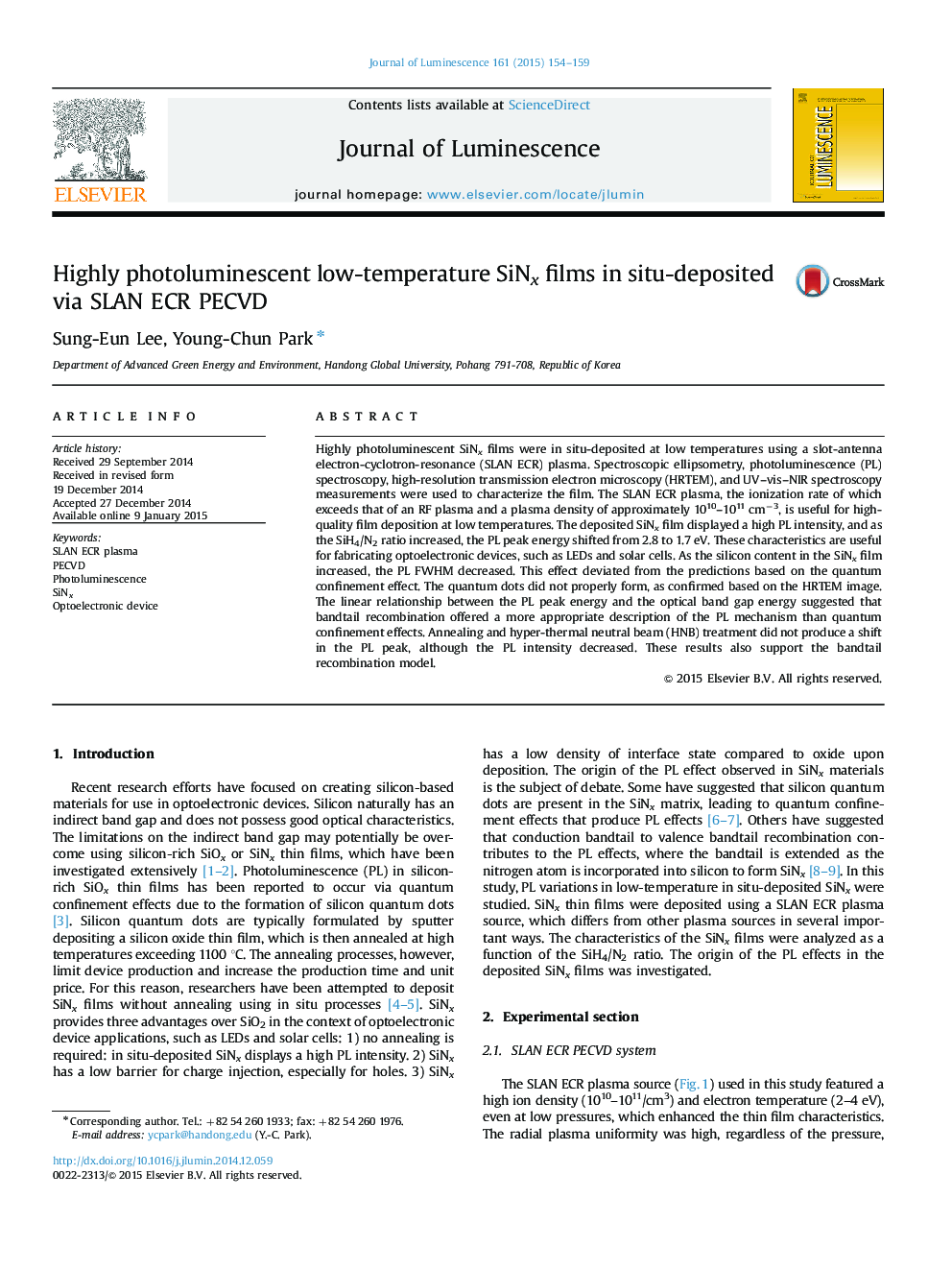| Article ID | Journal | Published Year | Pages | File Type |
|---|---|---|---|---|
| 5398939 | Journal of Luminescence | 2015 | 6 Pages |
Abstract
Highly photoluminescent SiNx films were in situ-deposited at low temperatures using a slot-antenna electron-cyclotron-resonance (SLAN ECR) plasma. Spectroscopic ellipsometry, photoluminescence (PL) spectroscopy, high-resolution transmission electron microscopy (HRTEM), and UV-vis-NIR spectroscopy measurements were used to characterize the film. The SLAN ECR plasma, the ionization rate of which exceeds that of an RF plasma and a plasma density of approximately 1010-1011Â cmâ3, is useful for high-quality film deposition at low temperatures. The deposited SiNx film displayed a high PL intensity, and as the SiH4/N2 ratio increased, the PL peak energy shifted from 2.8 to 1.7Â eV. These characteristics are useful for fabricating optoelectronic devices, such as LEDs and solar cells. As the silicon content in the SiNx film increased, the PL FWHM decreased. This effect deviated from the predictions based on the quantum confinement effect. The quantum dots did not properly form, as confirmed based on the HRTEM image. The linear relationship between the PL peak energy and the optical band gap energy suggested that bandtail recombination offered a more appropriate description of the PL mechanism than quantum confinement effects. Annealing and hyper-thermal neutral beam (HNB) treatment did not produce a shift in the PL peak, although the PL intensity decreased. These results also support the bandtail recombination model.
Related Topics
Physical Sciences and Engineering
Chemistry
Physical and Theoretical Chemistry
Authors
Sung-Eun Lee, Young-Chun Park,
